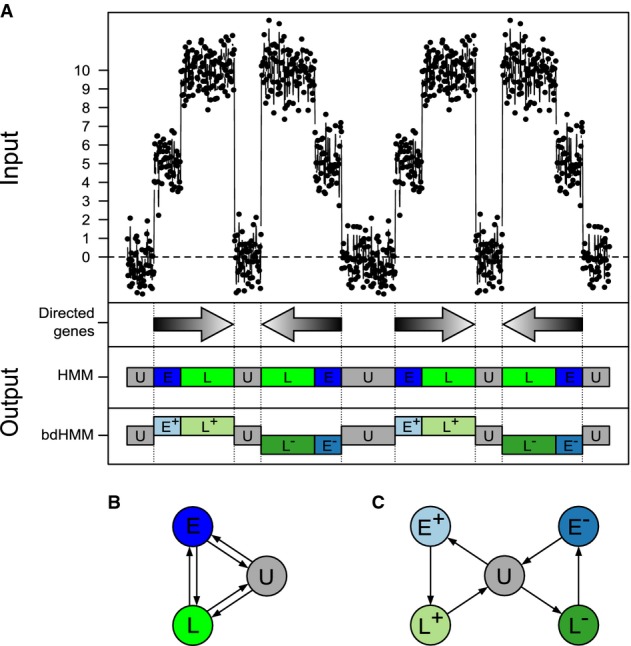Figure 1.

Principle of bidirectional HMM (bdHMM).
- Simulated occupancy signal (1st track from the top) for a putative factor with a low level (centered at 0) in untranscribed regions (state U), an intermediate level in 5' part of genes (state E), and a high level in 3' part of genes (state L). Arrows (2nd track) depict boundaries and orientation of transcription. Unlike standard HMM (3rd track), bdHMM (4th track) infers strands (+ or −) to expressed states (E, L).
- HMM transition graph. Because orientation of transcription is not modeled by standard HMM, the spurious reverse transitions (E ⇒ U,L ⇒ E and U ⇒ L) are as likely as the correctly oriented transitions (U ⇒ E,E ⇒ L and L ⇒ U).
- bdHMM transition graph. In contrast to HMM, bdHMM, which has explicit strand-specific expressed states (E+/E− and L+/L−), allows inferring only the correctly oriented transitions.
